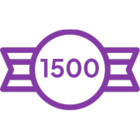I would like to create a custom url which led users to a specific SKUID tab. The url is:
https://b-lab.secure.force.com/fund/apex/BAnalytics
And I have tried making it:
https://b-lab.secure.force.com/fund/apex/BAnalytics#skuid-component-tab-17
Which is the tab I’m looking for. However, clicking on it sends you to the first tab in the tab set rather than to the tab indicated. When I inspect element, I get the following
Let me know if I could reference any of the elements in there in the URL, or whether I’m thinking about this the wrong way and there’s a better solution. Thanks!









